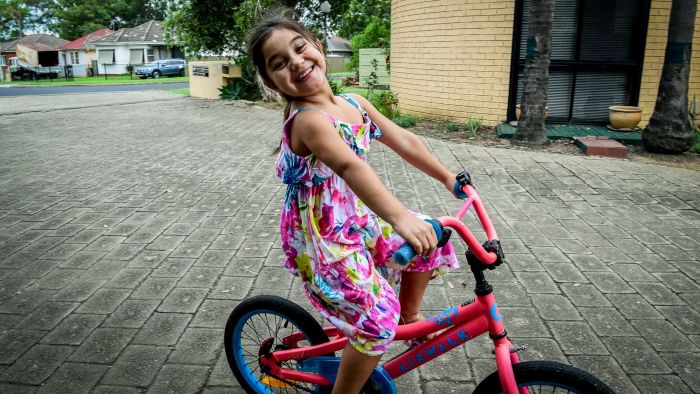Meet Karla De Lautour today and you’ll find a lively seven-year-old who enthusiastically takes to her bike, or seizes any opportunity to bounce on her trampoline.
Key points:
- Doctors could not figure out how to treat Karla De Lautour’s rare combination of arthritis and liver problems
- They referred her to the Garvan Institute to participate in a study on genetic auto-immune conditions
- The scientists mapped her genome and discovered a drug already existed to treat the cause of Karla’s problems
A few years ago, she could barely walk 20 metres without needing her mum to carry her.
“We always had a stroller with us till she was about four, everywhere we went,” Barbara Guerra said.
Until recently, Karla suffered from swollen joints, and an inflamed liver: an unusual combination of autoimmune conditions that caused her enormous distress and flummoxed her doctors.
That is until a team of scientists at Sydney’s Garvan Institute were able to identify the exact treatment to bring her relief.
They are among a growing number of researchers joining forces with doctors to find personalised therapies, particularly for people with unusual conditions.

Karla was first known to them only by her genome, which they decoded in their lab as part of a study into rare auto-immune conditions.
When Chris Goodnow, who leads the programme, recently met Karla face-to-face he was overjoyed to discover the case study with the painful joints had transformed into “a fantastic, chirpy, totally normal, seven-year-old.”

Karla’s condition first showed itself when she was 18 months old and had t

